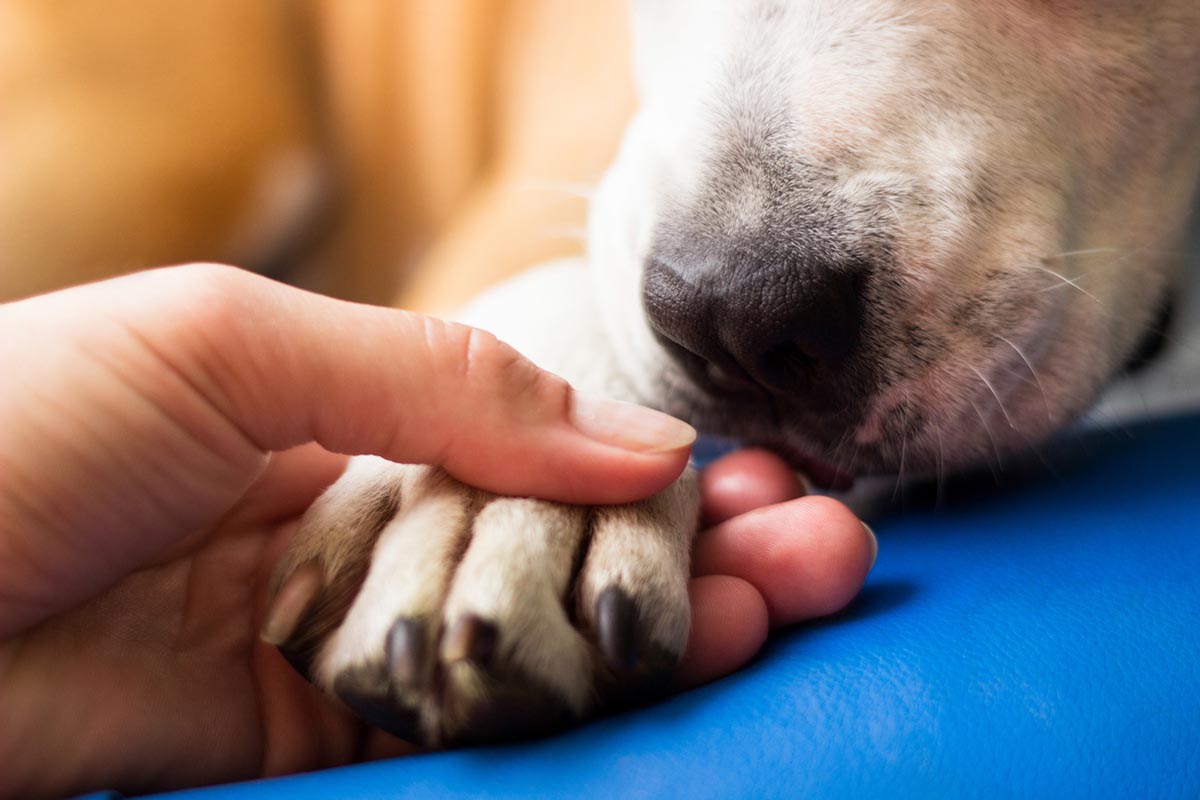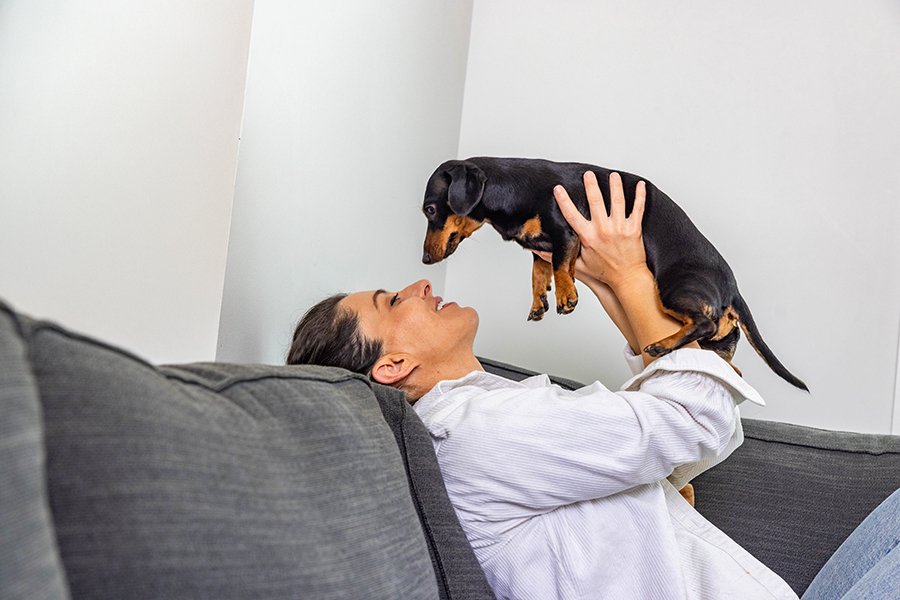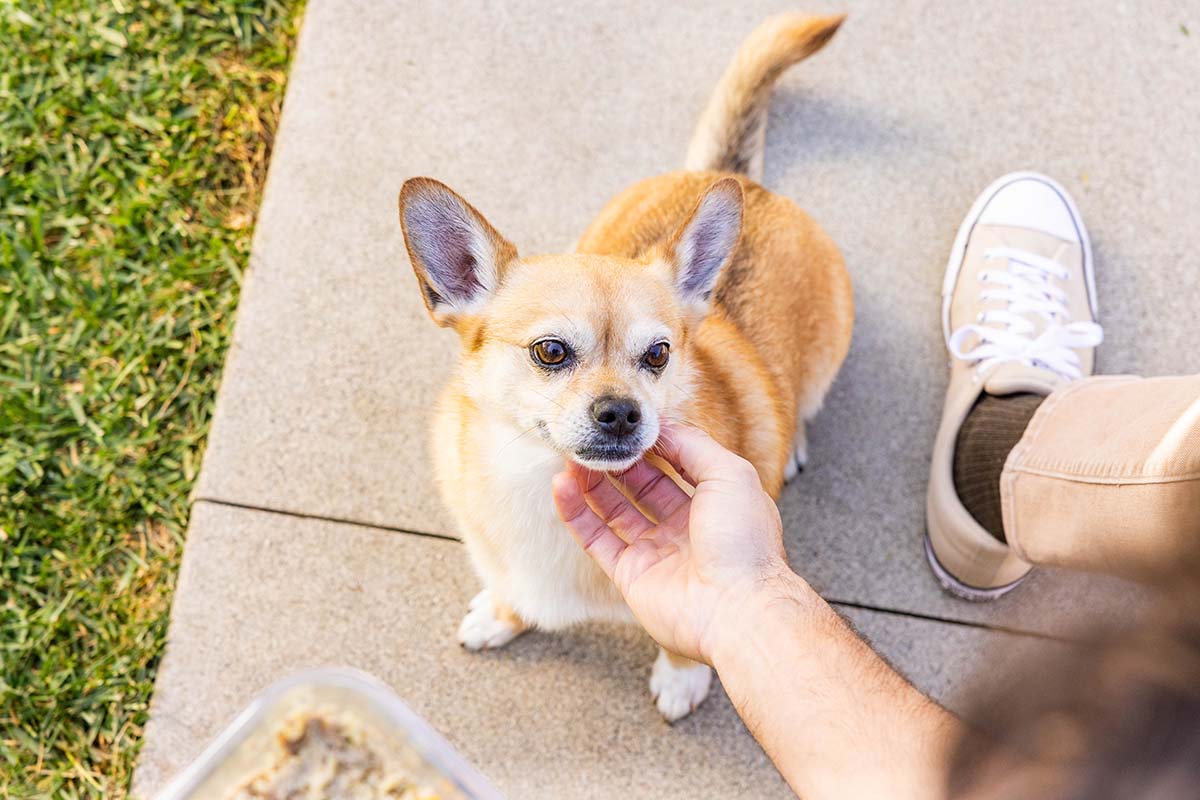Dog Paws Anatomy & Care Guide
A dog’s paws do a LOT of work! Understanding the basic anatomy of your dog’s paws is helpful knowledge for dog owners to know what’s normal.
A dog’s paws do a LOT of work! Understanding the basic anatomy of your dog’s paws is helpful knowledge for dog owners to know what’s normal. Today we’re ‘digging’ into all things dog paws and how to best care for your furry friend’s feet and keep your pup healthy for years to come.
The Anatomy of A Dog’s Paw
Dog feet come in all sorts of adorable shapes and sizes, but do you know what parts make up your dog’s paw? Dog’s paws contain ligaments, tendons, bone, tissue, and muscle. They have five main parts, each working together with the other parts of the paw to get your dog where they need to go.

The 5 Main Parts of A Dog’s Paw:
- The claw
- Digital pads
- Metacarpal pads (front paws) and metatarsal pads (rear paws)
- Dewclaw
- Carpal pad
Dog’s Paw Pads
So what are dog paw pads made of? Dogs’ paw pads consist of fatty tissue that creates the ‘padding’ of the pad, and thick, durable skin to protect the tissue.
Dogs have three main types of pads on their paws. Metacarpal and metatarsal pads are the large pads in the center of your dog’s feet. Digital pads are the smaller pads on each of your dog’s toes. These pads work as shock absorbers and
Last but not least, your dog has a carpal pad behind their main paw pads, which acts like the heel of a human giving them stopping power and traction going down a slope. All of your dog’s pads help support their weight and absorb impact as they walk, run, jump, and play.
Dog’s Claws
Dog’s claws are made of a protein called keratin, the same protein that human nails and hair is made of. A dog’s nails also contain a host of nerves and blood vessels, which is why it’s important not to trim their nails too short.
Dogs have two main types of claws on their paws, each with a specific job. The main claws are at the end of each of your dog’s toes like toenails, four on each foot both front and rear. Claws provide your dog with better balance and stability, allow them to dig, and make it easier to maneuver when running.
The second type of claw that some dog breeds have is called the dewclaw (sometimes written as dew claw). It’s usually located on a dog’s front legs near the carpal pad, though some dogs do have dewclaws on their rear legs too. Dewclaws provide traction for dogs when running and turning, climbing, or holding an object with their paws.
Paw Care: Keeping Your Dog’s Paws Healthy

Your dog’s overall health and well-being as well as their ability to get around depend a lot on their paws. Taking measures to prevent issues and maintain healthy paws that will follow you anywhere is important for all dog owners.
How To Care For Dog Paws
We know paw health is important, but what happens when paws that aren’t well cared for or paw issues that go unaddressed can lead to bigger problems for your pup.
Paw health has been tied to things like loss of muscle mass, strained joints, skeletal misalignment, or a greater risk of falling due to balance issues. And when your dog licks his paws excessively, that can cause infection. Reach out to your DVM if excessive licking becomes a problem.
Here are things you can do to help your dog maintain optimum paw health.
Seasonal Preventative Measures
Icy conditions are a safety hazard for both you and your dog. If you have a driveway and walkway, don’t forget de-icing in the winter. Use the pet-safe kind as traditional rock salt can burn dog paws.
Nail Trims
If you don’t want to tackle trimming your dog’s nails yourself, but make sure they get to the groomer for regular nail trims to avoid issues like infections, ingrown nails, itchy skin around the nails, or discomfort for your pooch. If their nails get too long, it can also be tough for your dog to maintain traction while walking or running.
How Often Do I Need to Trim My Dog’s Nails?
Generally, dogs should get their nails trimmed every 3-4 weeks, but how often you trim your dog’s nails may vary depending on their needs. Dog breeds with longer hair should also have the fur around their toes trimmed to keep it from getting caught in the nail clipper or file, and from growing too long around their nails.
Paw Protection
Summer heat and winter cold have a big impact on dogs’ paws. Walking on hot pavement can cause uncomfortable blisters, and cold, icy sidewalks can be rough terrain for a dog’s pads. Dog boots and dog booties are a great way to protect your dog’s paws in the heat or the cold, or anytime your dog will be walking on rough surfaces that could cause abrasions to the paw.
Fun fact: Dogs sweat through their paws! Since the paws have sweat glands, it’s important to keep these protected to help regulate body temperature on particularly hot days.
Dryness is another factor. If your dog’s paw pads tend to get dry and cracked in cold weather climates, try using a paw balm or paw wax like Musher’s Secret to coat, moisturize, and protect their pads before dog walks.
Why Does My Dog’s Paws Smell Like Corn Chips?
Have you ever gotten a whiff of your dog’s paws and smelled Frito Corn Chips? Rest assured, you’re not the only one! Many dog owners report their pup’s paws smelling like corn chips. The smell is caused by a bacterial infection called Pseudomonas and Proteus. The yeast-like odor given off by this bacteria often smells just like corn chips.
Yeasty-smelling feet aren’t necessarily an issue for dogs’ paws on their own, but it can lead to infection. If you notice your dog limping, licking, inflammation, or hair loss around the paws, it may be a sign of something more serious than a little bit of stink.
How To Treat Smelly Dog Feet
To treat fungal and yeast infections in dogs’ feet, gently and carefully wash their paws with antiseptic, dog-friendly shampoo and warm water. Wash between their toes, check for foreign objects while you’re at it, and be sure to dry their feet thoroughly to avoid any more bacterial growth.
Which Dog Breeds Have Webbed Feet?

Dogs with webbed feet are a lot more common than you’d think. Most dogs have at least some webbing between their toes, giving them more traction on a range of surfaces. This webbing helps dogs be fast swimmers, and great hunters, and get around wherever they need to go quickly. Popular breeds with more webbed feet include:
- Labrador retrievers
- Portuguese water dogs
- Newfoundlands
- Akitas
- Some Pitbull terriers
- Dachshunds
- Samoyeds
- Greyhounds
Since all dogs have some connective tissue between their toes, having webbed feet doesn’t necessarily make your dog more prone to paw problems. Dog owners should just be sure to take a little extra care of their pup’s paws when extra skin is present.
This content is for informational use only and does not replace professional nutrition and/or medical advice, diagnosis, or treatment. It is not a substitute for and should not be relied upon for specific nutrition and/or medical recommendations. Please talk with your veterinarian about any questions or concerns.








